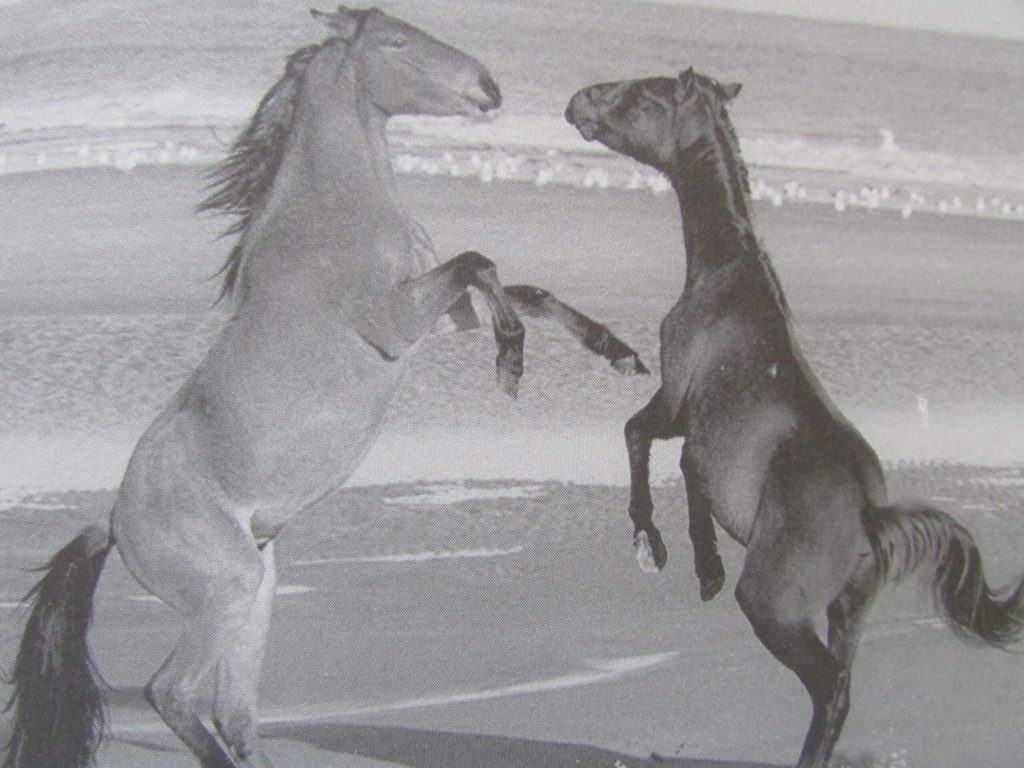Built on a Curse – Part 1
Published 12:53 pm Sunday, August 4, 2024
|
Getting your Trinity Audio player ready...
|
Just the words, “Cumberland Island” make your imagination start to smoke. Even though the only access was, and still is by boat, this largest of the barrier islands has had a history that roars. It has seen rogues, pirates, smugglers and land speculators, as well as prehistoric Indians, planters, naturalists, pilots, inventors, industrialists and billionaires. All of them have shaped this island’s history.
The island is now, and in the future, under the protection of the National Park system. This is a huge responsibility for on this place, where the sand shifts with the tide, are two areas where prehistoric remains were found – Terrapin Point and Table Point. The rest of the island is divided up into five historic districts – Stafford, Plum Orchard, Half Moon Bay and Bluff, High Point and the most famous, Dungeness. In these very interesting areas, there are twenty-one historic structures, forty-eight ruins, thirteen exotic landscapes, and four cemeteries. Of all of these, the Dungeness Mansion is the most storied and haunted with many legends of being cursed.
So, let’s continue our trip, over at Georgia’s Atlantic shore. We’ll find comfortable seats on the ferry for the forty-minute ride. We will go back in time, to the beginning, to when the first man lived on Cumberland Island and trace his footsteps up to the present.
Cumberland Island’s history goes way back, around four thousand years, when it was first discovered by prehistoric Indians. For sure, it must have been a slow journey. They had to paddle their dugout canoes along the waterways and search for a place to camp. Perhaps, these first visitors were just there for the seasons of hunting and fishing. Or maybe, they loved the shell fish which once overloaded the waters along these shores. For many generations, the natives enjoyed the good life there, feasting on the oysters from the St. Mary’s River and throwing the shells on piles that grew into magnificent size mounds.
Archeologist Frank Setzler responded to a call in 1932, which came from a resident who had found the remains of a dugout canoe. It was on the South end of the island. After being unearthed, it was taken to the Smithsonian Institute where it has been preserved. Also, during this dig, Setzler and his team found at least seven native villages that were still in existence, when the Spanish came to Cumberland Island in 1566.
Before this time, the island was occupied by the Timucuan and Guale Indians. No one knows exactly when they came. However, when the French Huguenots arrived on Cumberland Island in 1562, they were greeted by these residents. However, the Spanish regarded Cumberland and many other coastal islands as theirs and were not happy to find the French had come and occupied them. If the Spanish had gotten their way, they would have killed all of the French and the Indians, too.
When the Spanish did take over, they called Cumberland, San Pedro Island. Between 1566 and 1670, the Jesuit priests came and the Spanish built several missions and forts on the island. One ruin found was a tabby mission that was also called San Pedro. However, the Guale Indians tolerated the Jesuits when there was a few but they did not like that so many were beginning to show up. In 1597, a priest became angry at a Guale man for polygamy. This was the end of the Guale’s patience. Forty canoe loads of these Indians attacked San Pedro. The monks knelt and prayed to be rescued and the Guale let them leave the island.
However, it was not war that brought an end to the Guale Indians, it was all of the European diseases that the Spanish brought over with them. The last Spanish mission was destroyed in 1703, and eventually all traces of the Spanish had disappeared. However, the Spanish did leave behind a legacy and that is the many wild horses that still inhabit the island. Their ancestors were left by the Spanish and since no other horses were brought to the island, these have not interbred with any other breed.
Next, came the early English settlers who provided the driving force in establishing Georgia. On a sunny day in March, General James Oglethorpe, who is called the founder of Georgia, along with the Creek Indians who had moved in when the Guale and Spanish were moving out, joined with immigrants that were coming to America from Scotland. They arrived on Cumberland Island in 1736. Here they formed a settlement called Merrimac. Oglethorpe renamed the island, Cumberland Island, after William Augustus, Duke of Cumberland. In 1740, they built an earthen wall fort on the high bluff at what is now Terrapin Point. From this vantage point the Inland Passage could be clearly seen and guarded.
Oglethorpe also constructed the first hunting lodge on the island at the top of a plateau which had been created by a mound of white shells which had built up over the centuries by the Indians. A 1790 map, shows that it was on the southern end of Cumberland. He called it, Dungeness, after the Castle Dungeness, which was on the Cape of Dungeness, in the county of Kent in England.
In 1737, Oglethorpe oversaw the construction of the first defense installation, Fort St. Andrew, named for a patron saint of Scotland. It was large and could accommodate 200 soldiers. The next fort was built farther south than Dungeness, at the end of the island overlooking St. Mary’s Inlet. Surrounded by high, log walls, it was named Fort Prince William. Of the two forts, this one was of a stronger construction.
Now the Spanish, who wished they had stayed in Georgia, came back and were fighting and losing to the English on the mainland. They now made their way back to Cumberland Island, where they were solidly defeated. Having got the message, they headed back to Spain, never to return to Georgia again. These two forts played a vital role in keeping the Spanish from taking over the coast. However, the British lost interest in Cumberland Island by 1775, and completely abandoned it. Eventually, time erased all evidence that the forts had existed. Some historians who were researching the forts, would lead Park Rangers to where they thought they had existed. However, when these places were explored, nothing was ever found.
Oglethorpe, and his Dungeness, seemed to have been the only historical building that had not been touched by the curse that was connected to the southern end of the island. However, later owners were not so fortunate. The stories of the curse began with a Revolutionary War hero, General Nathanael Greene.
When America won her independence, several states showed their appreciation by presenting Greene with land seized from the British. Georgia gave him land that was eight miles up the Savannah River, that later became part of the city of Savannah. Greene sold most of his other properties to put all of his efforts into making this land he called Mulberry Grove, work for him.
Now he met Catherine “Caty” Littlefield, a beauty, born in 1753, on Block Island, Rhode Island. At eighteen, she met the rugged and handsome General Nathanael Greene. Even though he was twelve years her senior, they fell in love and in less than a year, they were married. However, Caty loved parties and she found life at Mulberry Grove dull.
Rumors began to fly that Caty was having an affair with a good friend of General of Greene’s, “Mad” Anthony Wayne. The story reached Greene and he was ready to call Wayne out in a duel. However, before this happened, while he was working in his fields, he became the victim of heat stroke and died on June 11, 1786. Three years before this untimely death, Greene had bought 11,000 acres of land on Cumberland Island because of all of the magnificent trees there but died before he could even get started on planning out his lumber business.
Now a widow with five children, Caty had a huge estate that included many properties, among them Cumberland Island. With the General gone, all of the debts he had accumulated during the Revolutionary War and since then, came out in the open. His financial affairs were a mess.
With Caty now a widow, many men wanted her attentions. However, she had something else in mind. She wanted to be rich. In order to attract a rich husband, she had to seem rich herself. One of the things she did was to hire a tutor for her children. However, it seemed that she forgot her quest for riches when on May 31, 1796, she married the tutor, Phineas Miller, who was ten years her junior.
This is when an old friend of Greene’s, Eli Whitney, came to Mulberry Grove. He thought that Caty had a lot of money and he brought his newly invented cotton gin with him. Phineas realized the value of this invention and joined with Eli to form the Miller and Whitney Company in order to manufacture the gin. Now many things were happening that put the couple deeply in debt. Phineas and Eli ran up many bills getting the invention patented and to start the manufacturing process.
Rice, which was the crop that brought in the money for Mulberry Grove, had several disastrous years and now the Miller’s faced financial ruin of epic proportions. To keep going, they decided to sell Mulberry Grove and move to Cumberland Island. Once there, Phineas could revive the plan that Greene had to harvest the timber. They also decided to grow what is now called, Sea Island cotton. However, the reputation of Mulberry Grove was so bad that no one came to buy it and it was auctioned off for far less than the couple had expected.
In 1800, the family moved to Cumberland Island. Caty now put her energy into making a fortune with the cotton and Phileas’s energy went into the timber. By June, 1800, over two thousand oaks had been cut down and the timber taken up to the New England shipyards.
However, cutting down the oak trees was not as profitable as the Sea Island cotton. With the promise of big money on the horizon, and the family living in a log cabin, Caty planned for a huge house to be built on the south end. Phineas did not like the grand idea but Caty was stubborn. She hired architects and craftsmen to design and build the first huge mansion on Cumberland Island on the same property as Oglethorpe’s humble hunting lodge, Dungeness. However, in order for the house to be on level land and be able to support its weight, the Millers leveled a huge prehistoric mound that was built up over centuries by the Timucuan Indians.
The house was made of tabby and had six-foot thick, tabby walls. The sea shells for the tabby came from the leveled mounds. At 4,000 square feet, it reached up four stories, and had a total height of 76 feet. It was said that it served as a lighthouse to the sailors out at sea. Protected from the fiercest weather, inside there were 26 rooms to accommodate family and guests. Caty also wanted gardens that would be a show piece to rival any of the best gardens in the South.
The outbuildings consisted of a cotton gin, carpenter’s shop, a blacksmith shop, stables and twelve acres of exotic plants. The longest road on the island, Grand Avenue, was cut through from Dungeness on the South end to the harbors on the North end. It exists today.
In 1803, the house was nearly finished and the family moved in. Caty was told by the Indians working on the mansion that it should never be finished because of the superstition that said it if was, misfortune would come upon them. However, Caty did not believe in superstitions and the house was finished. The first incident involving the curse was when a terrible tragedy happened. Two of Caty’s children drown. Then, shortly afterwards, Phineas cut his finger on a thorn during a trip to Florida to purchase Caty’s tropical plants. Within a week, at 39 years old, he was dead from lockjaw.
Caty didn’t seem to be all that upset for in a very short time, she and Dungeness became the center of high society. Caty proved not to be a good money manager and she was forever in heavy debt. Nevertheless, the costly lavish parties continued.
Next, we will follow the curse and Caty through the rest of her life and on to other happenings on Cumberland Island.






